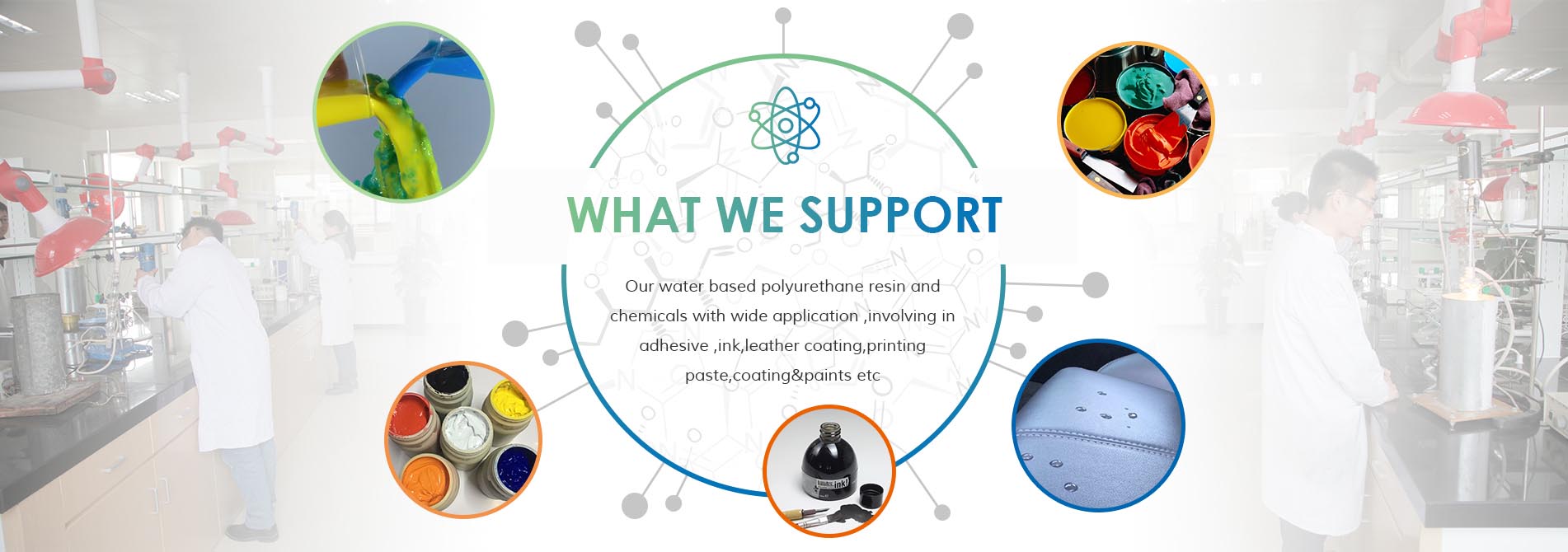
Categories
Latest blog
Water based Polyurethane WPU

However, these new waterborne polyurethanes show great excellence in water resistance, solid content, mechanical properties and thermodynamics.
A kind of hard segment of waterborne polyurethane with sulfonic acid group in the molecular chain was synthesized, and its dispersion system had lower viscosity and higher solid content.The results show that this kind of aqueous polyurethane with sulfonic acid has better mechanical properties and storage stability than carboxylic acid type.This is because the sulfonic acid group has a large double electric layer potential, and the electrostatic repulsion between molecules prevents the condensation between molecules, which makes the synthesized waterborne polyurethane produce strong hydrophilicity and the dispersion stability is improved.At the same time, the introduction of sulfonic acid groups increases the content of hard segments in the whole system, resulting in increased intermolecular forces and more orderly arrangement of molecular structures.
Water - based polyurethane with solid content of 40 % was synthesized by sulfonic acid and hydrazine chain extender.The results show that the emulsion stability, elongation at break, tensile strength and thermodynamic stability of the film are significantly improved.
Castor oil was used as crosslinking agent to synthesize castor oil modified waterborne polyurethane.The results showed that with the increase of castor oil content, the hydrophobicity and mechanical properties of the film were improved.Thus the application range of waterborne polyurethane has been broadened.
Using rosin as modifier, polycaprolactone diol (PCL220N) and tdi-80 as main synthetic materials, the modified TDI waterborne polyurethane adhesive was successfully prepared.The results showed that the tensile strength of waterborne polyurethane film reached the maximum when the rosin was 5.73 %
For any requirements on water based polyurethane dispersion binder and isocyanate hardener for printing ink,kindly contact us!
© Copyright: Anhui Dowell Huatai New Materials Co., Ltd All Rights Reserved.